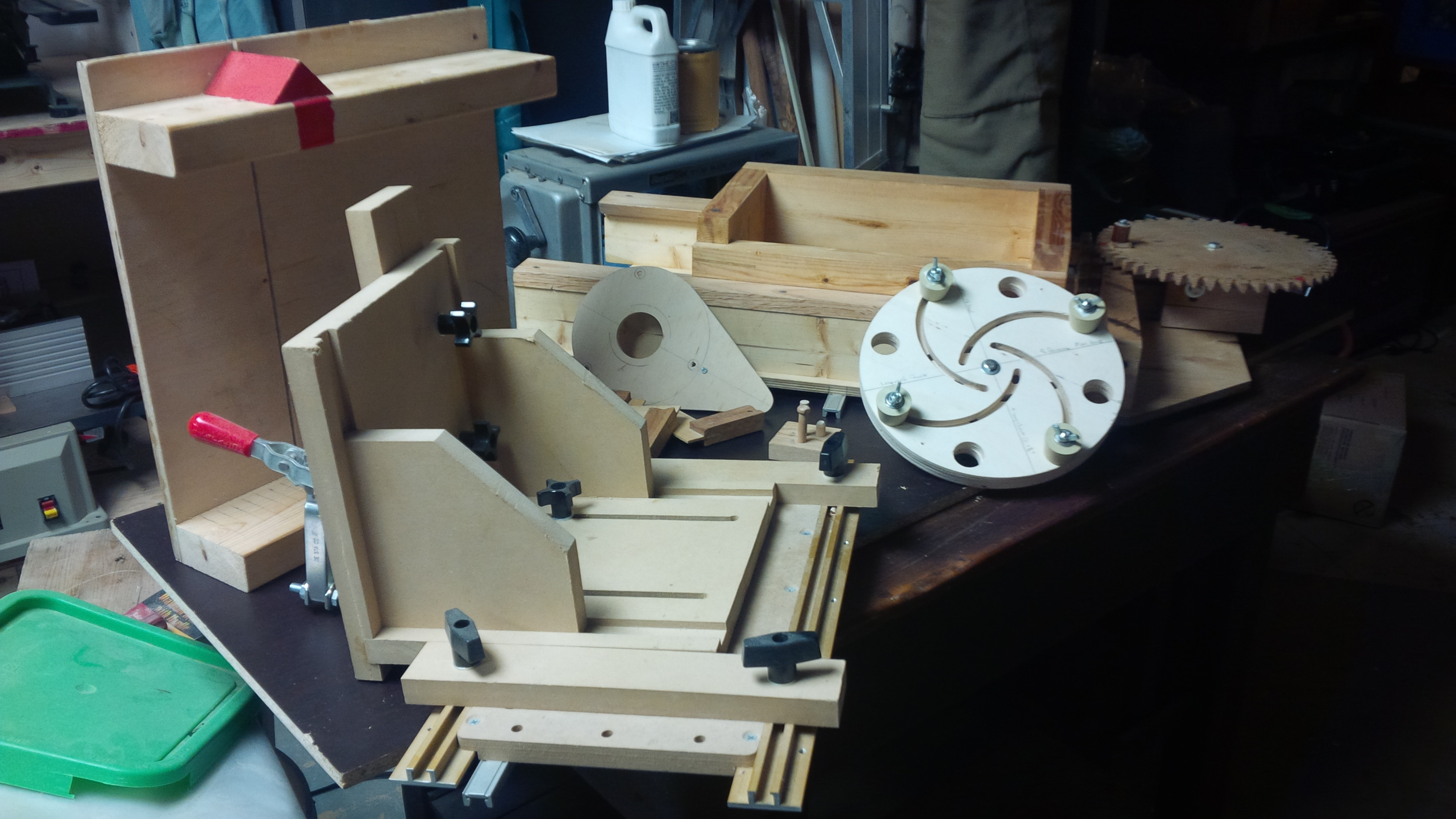Today’s post is written by Stephen Parsons.
Getting back to woodworking after a long absence has resulted in a lot of satisfaction, many new challenges, and lots of learning. In fact I would say that the greatest satisfaction comes when I learn something new as the result of being challenged to produce something complex or difficult. This is never more clear or the result more satisfying than when I have had to design and build a “jig” – a helper tool that complements other standard machines and tools in my workshop.
A jig is to a woodworker as a “hack” is to a computer programmer: that is, it is a creative solution to a sometimes complex problem. You can buy all the tools that Lee Valley, Oneway, General International, and Rockler might have to offer and still not have that one solution that you need to make that cut, develop that profile, or create the joinery you need for a particular project. Coming up with an auxiliary tool you build on your own to supplement what your power and hand tools can do is a critical skill for the proficient woodworker.
Imagine, for example, that you are thinking to do a large production run of products using a box joint. With a dado on your table saw and a set of stops on your mitre, you could get through the task, but not without a lot of mind-numbing cut-move-set-repeat actions. Perhaps, you’d like to design Harry Potter wands and old-fashioned nib pens, but find that the thinner profiles cause the wood to whip around too much in the lathe. Or maybe you want to finish a piece with some beautiful dark hardwood dowels, but you can’t source them anywhere locally and you realize that the cost and shipping time would be prohibitive.
These are all real challenges I have faced recently and in each case, a jig was the answer that provided both immediate and long-lasting solutions. The photograph shows you some of the jigs that I have developed recently to solve some of woodworking’s common (and uncommon) problems. In future posts, I will look at some of these jigs in detail, speak about the issues they were developed to solve and discuss some of the approaches to designing and building them. I may even have a few free plans you can use along the way, so please stay tuned.
Warning: Building jigs is addictive. You might build a jig to solve a woodworking challenge, but there is an inherent entertainment in the act of constructing a jig. It would only be fair to warn you that building jigs may lead to infectious joy that may take you away from your usual productivity – at least temporarily.
Next in this Series: Joy of Jigs Part II


Recent Comments